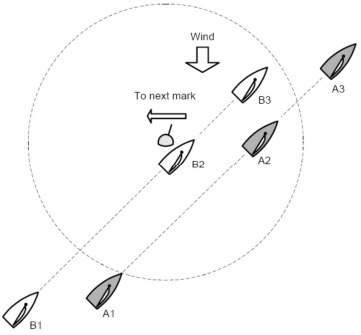|
Yes. While A remains on port tack, B is required to keep clear by rule 12 and,
as A was clear ahead when she reached the zone, B is required by rule 18.2(a)
(2) to give A mark-room as well. Provided B keeps clear of A and gives A
mark-room if A luffs (even if A luffs as high as head to wind), B is entitled to
sail any course she chooses, including holding her course. However, B is no
longer required to give A mark-room after A leaves the zone (see rule 18.2(b)).
If A were to pass head to wind, then at that moment rule 18.2(a) would no
longer apply (see rule 18.2(b)), and all other parts of rule 18 would cease to
apply because the boats would be on opposite tacks on a beat to windward (see
rule 18.1(a)(1) and Case 132). In addition, A would no longer have right of way
under rule 12, and B would become the right-of-way boat under rule 13.
|
